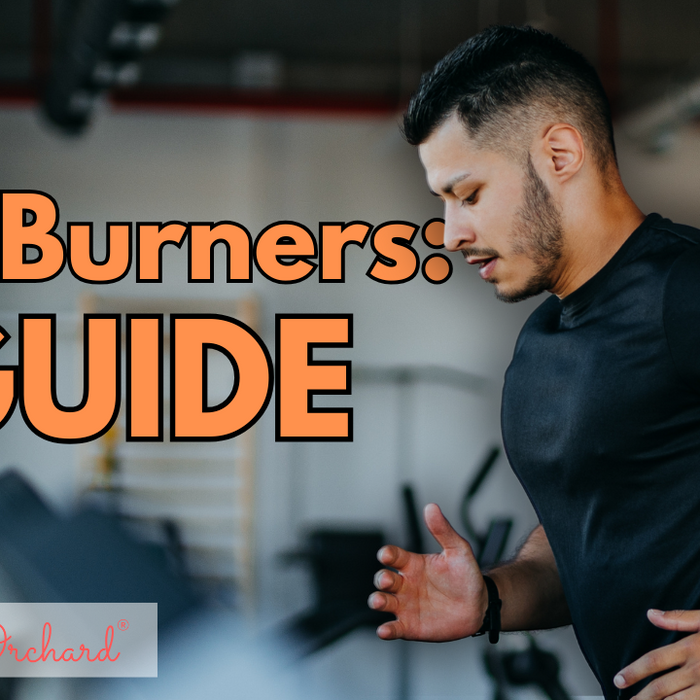

Children's Sleep Aids: Guide
Key Takeaways
- Understanding Sleep Challenges: Common sleep issues like insomnia, nightmares, and bedtime resistance can significantly impact children’s well-being and family routines.
- Factors Influencing Sleep: Developmental milestones, stress, lifestyle habits, and medical conditions often play a role in sleep disturbances.
- Options for Sleep Aids: Melatonin, herbal remedies, white noise machines, and weighted blankets are popular choices, but safety and age-appropriateness are crucial.
- The Importance of Sleep Hygiene: Consistent routines, screen-free time, and a sleep-friendly environment are effective natural solutions.
- When to Seek Medical Advice: Persistent sleep problems or symptoms of underlying health issues should prompt a visit to a healthcare professional.
Getting enough quality sleep is critical for a child’s mental, emotional, and physical development. However, many children struggle with sleep issues, leaving parents seeking effective solutions. According to recent studies, up to 50% of children experience sleep disturbances at some point. While sleep aids can provide relief, knowing which options are safe and effective is essential.
This guide will help you explore the different types of sleep aids available for children, their risks and benefits, and natural alternatives to consider. Health Orchard is here to support your journey by offering trusted resources and a wide selection of health products tailored to your family’s needs.

Understanding Sleep Issues in Children
Common Sleep Problems
Sleep problems are common in childhood and can manifest in several ways, disrupting both the child’s rest and the household routine. Insomnia is one of the most prevalent issues, characterized by difficulty falling or staying asleep. This condition can stem from stress, overstimulation before bedtime, or inconsistent sleep schedules. Another frequent issue is nightmares or night terrors, which involve either distressing dreams or abrupt episodes of fear and confusion during sleep. Nightmares typically occur during REM sleep, while night terrors happen in non-REM stages, making them more intense and harder to wake a child from.
Bedtime resistance is another common problem, often rooted in behavioural challenges or fear of missing out. This can include refusal to go to bed, constant stalling tactics, or outright tantrums. Lastly, sleep regression is a temporary setback in sleep patterns, frequently occurring during major developmental milestones, such as learning to walk or talk. These regressions can last anywhere from a few days to several weeks, leaving parents frustrated and exhausted. Recognizing the type of sleep problem is the first step in finding an effective solution.
Factors Contributing to Sleep Difficulties
A variety of factors can influence a child's sleep patterns, with developmental changes being among the most significant. As children grow, they often acquire new skills or experience cognitive leaps that excite or overstimulate them, leading to disrupted sleep. Stress or anxiety is another common factor, often triggered by changes such as starting school, moving to a new home, or family dynamics like divorce. Even seemingly minor stressors, like a change in bedtime routine, can contribute to poor sleep.
Lifestyle choices can also play a critical role. A diet high in sugar or caffeine, especially in the evening, can make it difficult for children to wind down. Similarly, insufficient physical activity during the day may leave children with unspent energy that interferes with restful sleep. Medical conditions like asthma, allergies, or attention-deficit hyperactivity disorder (ADHD) can further compound sleep issues by causing discomfort, frequent awakenings, or restlessness. Understanding these factors can help parents pinpoint the root causes of their child’s sleep struggles and take targeted action.
Types of Sleep Aids for Children
Over-The-Counter Options
- Melatonin Supplements: Research shows melatonin can reduce sleep onset time by 20-30 minutes in children, particularly those with neurodevelopmental disorders. Dosage should be carefully monitored under medical supervision, starting with the lowest effective dose (typically 0.5-1mg) and adjusting based on individual response.
- Herbal Remedies: Traditional sleep aids like chamomile contain compounds that bind to GABA receptors, potentially promoting relaxation and sleep. While generally safe, these supplements lack standardization and rigorous clinical evidence, requiring careful consideration of quality, dosage, and potential interactions with other medications.
Prescription Medications
In severe cases of sleep disorders, pediatricians may prescribe medications such as antihistamines or mild sedatives as a medical intervention. These medications are carefully selected based on the child's age, medical history, and specific sleep-related condition. While prescription sleep aids can be effective for treating diagnosed sleep disorders, they are typically recommended only for short-term use under close medical supervision.
Non-Medical Aids
- White Noise Machines: White noise machines create a consistent background sound that helps mask sudden noises and changes in the environment. These devices are particularly effective for children who are sensitive to environmental sounds or live in noisy areas.
- Weighted Blankets: Weighted blankets use deep pressure stimulation to trigger the release of serotonin and melatonin in the body. The gentle, distributed weight helps reduce anxiety and restlessness while promoting longer periods of uninterrupted sleep.
- Essential Oils and Aromatherapy: Certain essential oils like lavender, chamomile, and vanilla have natural calming properties that can help signal to the brain that it's time for rest. When used in a diffuser or as part of a bedtime routine, these scents can help create positive sleep associations and reduce bedtime resistance.
Safety and Effectiveness of Sleep Aids
Are Sleep Aids Safe for Children?
Safety of sleep aids varies based on the child's age, overall health, and aid type. Side effects can include drowsiness, headaches, and digestive issues, with younger children showing heightened sensitivity. Medical consultation is essential before starting any sleep aid, as healthcare providers can assess individual risks and recommend appropriate options based on the child's specific needs.
Evidence Supporting Common Sleep Aids
- Melatonin: Multiple studies involving children with neurodevelopmental disorders show melatonin can reduce sleep latency by 30-45 minutes and increase total sleep duration. While short-term use appears safe, research on extended use is limited and requires physician oversight to monitor dosing and potential side effects.
- Herbal Remedies: Clinical evidence for traditional sleep aids like chamomile and valerian root remains sparse, with most studies being small-scale or showing inconsistent results. Parents should exercise caution due to potential herb-drug interactions and allergic reactions, particularly since herbal supplements aren't regulated as strictly as pharmaceuticals.
Natural and Behavioral Alternatives
Sleep Hygiene Practices
- Establish a routine: Maintaining consistent sleep and wake times helps regulate the body's circadian rhythm and natural sleep-wake cycle. This routine should extend to weekends with minimal variation to prevent "social jet lag" and sleep schedule disruption.
- Optimize the environment: Creating a dark room using blackout curtains blocks disruptive light that can interfere with melatonin production. The ideal sleep temperature is between 65-70°F (18-21°C), as this range supports the body's natural temperature drop during sleep.
- Limit screen time: Blue light from electronic devices suppresses melatonin production and increases alertness, making it harder to fall asleep. Replacing screen time with calming activities like reading or gentle stretching helps signal to the body that it's time to wind down.
Behavioral Interventions
- Cognitive-Behavioral Therapy for Insomnia (CBT-I): This evidence-based treatment helps children identify and modify thoughts and behaviors that interfere with sleep, such as anxiety about bedtime or poor sleep habits. CBT-I typically includes sleep restriction, stimulus control, and relaxation techniques, showing significant improvements in both sleep onset and maintenance.
- Positive Reinforcement Techniques: Using sticker charts or other reward systems can motivate children to follow their bedtime routine and stay in bed throughout the night. The key is consistency in applying rewards and focusing on the process rather than the outcome, as this helps build lasting healthy sleep habits.
When to Consult a Doctor
If sleep disturbances persist for weeks or significantly impact your child’s mood, behaviour, or development, it’s time to seek professional help. Discussing concerns with a pediatrician can uncover potential underlying issues like sleep apnea or restless leg syndrome, leading to targeted treatments.
Tips for Choosing the Right Sleep Aid
- Assess Your Child's Needs: Start by tracking sleep patterns and behaviors to identify specific issues like difficulty falling asleep, night wakings, or early morning awakening. Understanding the root cause helps determine whether the solution lies in behavioral changes, environmental modifications, or potential medical intervention.
- Consider Age and Health Factors: Children's sleep needs and responses to sleep aids vary significantly by age, with infants and toddlers being particularly sensitive to interventions. Medical conditions, medications, and developmental stages all impact which sleep aids are appropriate and safe.
- Check Labels and Seek Expert Advice: When considering supplements, look for products that have undergone third-party testing for purity and accurate labeling. Always consult with a pediatrician or sleep specialist before starting any sleep aid regimen, as they can provide personalized guidance based on your child's specific needs and medical history.
Conclusion
Addressing your child’s sleep problems can feel overwhelming, but a combination of natural approaches and informed decisions can lead to lasting improvements. Whether trying sleep aids or enhancing bedtime routines, prioritize safety and evidence-based options. Quality sleep is essential for children’s health and well-being. By focusing on natural methods and carefully considering sleep aids, you can create a restful environment for your child.
If you’re looking for reliable products to support your child’s sleep, Health Orchard offers a wide range of high-quality sleep aids and supplements. Compare prices and find trusted brands like iHerb, Walgreens, and Amazon—all in one convenient place. Start your journey to better sleep today with Health Orchard. Empower your child with the rest they need to grow and thrive.
Frequently Asked Questions about Children's Sleep Aids
1. What medicine helps kids sleep?
Over-the-counter options include melatonin supplements and antihistamines. Prescription medications may include clonidine or certain antidepressants, but these require doctor supervision. However, medication should be a last resort after establishing good sleep habits and addressing underlying causes.
2. Is it safe to give kids melatonin?
Short-term melatonin use is generally considered safe under medical supervision for children with sleep disorders. However, long-term effects aren't fully known. Proper dosing is crucial, and it should only be used after trying behavioral interventions and sleep hygiene improvements.
3. What home remedy helps kids sleep?
Effective natural sleep aids include warm milk with honey, chamomile tea, lavender aromatherapy, and magnesium-rich foods. A consistent bedtime routine, reduced screen time, warm baths, and relaxation techniques like deep breathing or gentle massage can promote natural sleep.
4. Is there an alternative to melatonin for kids?
Natural alternatives include magnesium supplements, L-theanine, valerian root, and tryptophan-rich foods. Behavioral approaches like consistent bedtime routines, reduced screen exposure, and relaxation techniques often prove effective. Exercise during the day can also improve sleep quality.
5. What vitamins help kids sleep early?
Key sleep-supporting nutrients include magnesium, vitamin D, B complex vitamins, and calcium. Iron deficiency can impact sleep, so adequate iron levels are important. These nutrients work best when obtained through a balanced diet rather than supplements.
6. What are the side effects of melatonin for kids?
Common side effects include morning grogginess, headaches, bedwetting, and changes in mood or appetite. Some children may experience nightmares, dizziness, or stomach problems. Long-term use might affect hormonal development and puberty timing.
7. Is sleep aid good for kids?
Sleep aids should be used cautiously in children and only under medical supervision. Non-medicinal approaches like consistent sleep schedules and bedtime routines should be tried first. Over-the-counter sleep medications aren't recommended for regular use in children.
8. What are the benefits of sleep aids?
Sleep aids can help establish regular sleep patterns, reduce bedtime anxiety, and improve sleep quality. They may be beneficial for temporary sleep disruptions or specific conditions. Benefits include faster sleep onset, reduced nighttime wakings, and improved daytime functioning.
9. Is sleep aid safe for daily use?
Regular use of sleep aids isn't recommended for children. They can lead to dependency, tolerance, and altered natural sleep patterns. Long-term use may mask underlying sleep issues that need addressing. Focus should be on developing healthy sleep habits.
10. Does sleep aid have side effects?
Sleep aids can cause daytime drowsiness, dizziness, confusion, and changes in appetite. Some children may experience paradoxical excitation, behavioral changes, or cognitive impairment. Dependency and rebound insomnia are risks with prolonged use.
References
- Mayo Clinic, “Sleep: An essential element of success for children”, March 2023.
- Healthy Children, “Melatonin for Kids: What Parents Should Know About This Sleep Aid”, April 2023.
- Pediatric Associates of Richmond, “Sleep Aids for Kids”, August 2024.
- Scientific Reports, “Exploring role of sleep aids in sleep problems in preschool children”, April 2023.
- Institute of Natural Medicine, “Natural Sleep Remedies for Children”, June 2024.
- WebMD, “How to Get a Child With ADHD to Go to Sleep”, March 2024.
- KidsHealth, “10 Ways to Help Your Child Get a Better Night’s Sleep”, May 2024.
- MedicalNewsToday, “Is melatonin safe for children?”, November 2018.
- Child and Adolescent Psychiatry and Mental Health, “Medications for sleep disturbance in children and adolescents with depression”, March 2020.
- Harvard Health, “How to help your child get the sleep they need”, September 2024.







